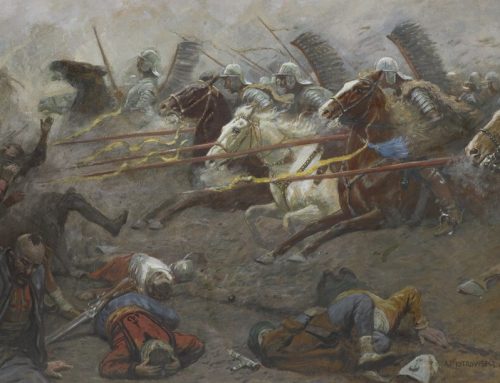Today I would like to introduce you to a different 17th century hetman (general), one who shared many commonalities with Stanisław Żółkiewski, one of my favorite hetmans of the era.
In the turbulent world of 17th century Central Europe, few names commanded as much respect as Jan Karol Chodkiewicz (pronounced Shoat-keeay-veeks), Great Hetman of Lithuania. A brilliant strategist, fearless warrior, and loyal servant to the Polish-Lithuanian Commonwealth, Chodkiewicz’s military career was marked by triumph against overwhelming odds.
Does this strike a familiar chord? I refer to my guy, Great Hetman of the Crown, Stanisław Żółkiewski, who appears in all three books in the Winged Warrior Series. Like Chodkiewicz, Żółkiewski was also a skilled military commander, leading men into battle who emerged victorious despite being greatly outnumbered. While they were both magnates who shared a mutual respect and served the same state, their relationship was marked more by parallel service than by frequent direct collaboration.
Among other similarities they shared were their deaths. Żółkiewski perished at Cecora in 1620, and Chodkiewicz’s final days were spent at the Siege of Chocim in 1621. Chocim was the follow-up to Cecora (featured in The Hussar’s Duty) and the battle that finally ended the Moldavian Magnate Wars. It was here that Chodkiewicz’s legacy was truly sealed.
Born into a powerful Lithuanian noble family in 1560, Chodkiewicz rose swiftly through the ranks of the Commonwealth’s military elite. His defining moment came in 1605 at the Battle of Kircholm, where he led a vastly outnumbered army of around 3,500 men—many of them winged hussars—to a stunning victory against a Swedish force three times its size (this recalls Żółkiewski’s victory under similar circumstances at Kłuszyn in 1610, which is where The Heart of a Hussar opens). His tactical genius, particularly his use of terrain and timing, earned him admiration across Europe and solidified his reputation as one of the era’s finest commanders.
Chodkiewicz was more than a battlefield tactician—he was a symbol of stoic leadership and personal sacrifice. Throughout his career, he fought not only foreign enemies but also internal discord and political paralysis within the Commonwealth (another similarity he shared with Żółkiewski). Despite chronic underfunding and inconsistent support from the Sejm (Parliament), he remained steadfast in service.
By 1621, Chodkiewicz was in his sixties, ailing, and weary—but duty called once again. Following the disastrous defeat at Cecora in 1620, the Ottoman Empire sought to crush the Commonwealth for good. With the might of Sultan Osman II bearing down on the Dniester River, Chodkiewicz led a mixed force of Polish, Lithuanian, and Cossack troops to the fortress of Chocim.
It would be his final campaign.
For over a month, he directed the defense from the trenches, rallying exhausted troops and organizing counterattacks while suffering from a debilitating illness. Too weak to ride, he was often carried on a litter, issuing orders from a field tent. But even in this state, his presence inspired fierce loyalty. Under his command, the defenders withstood repeated Ottoman assaults until disease and attrition forced the Sultan to negotiate for peace and sign the Treaty of Chocim on October 9.
Chodkiewicz died on September 24, 1621—weeks before the armistice was signed. He did not live to see the formal end of the siege, but his leadership ensured the Commonwealth did not fall.









Leave A Comment